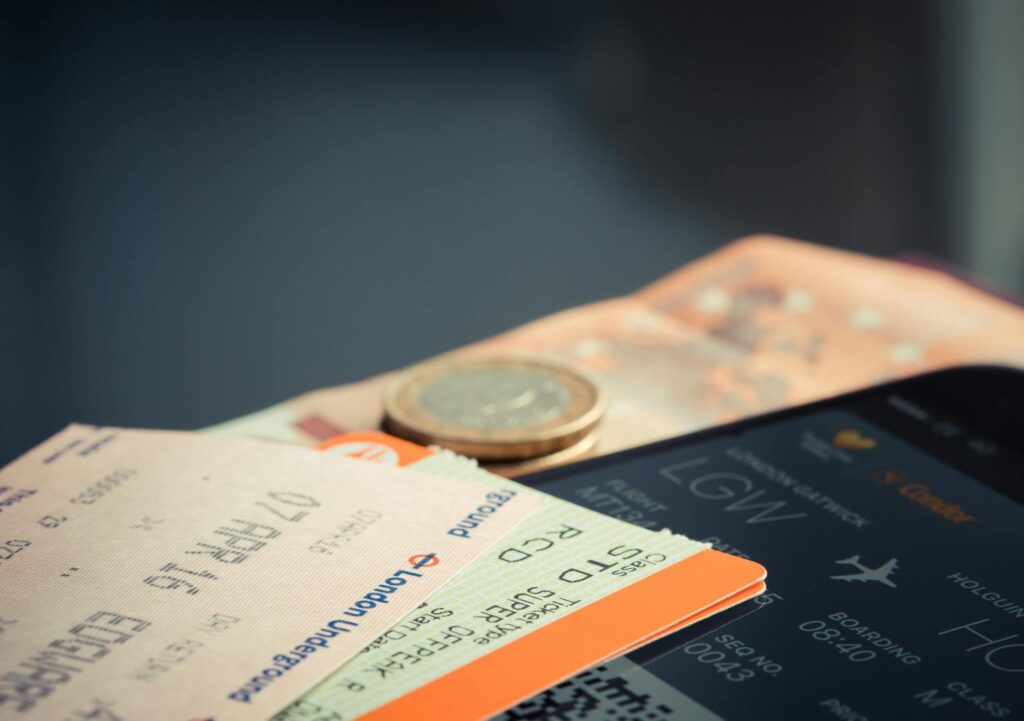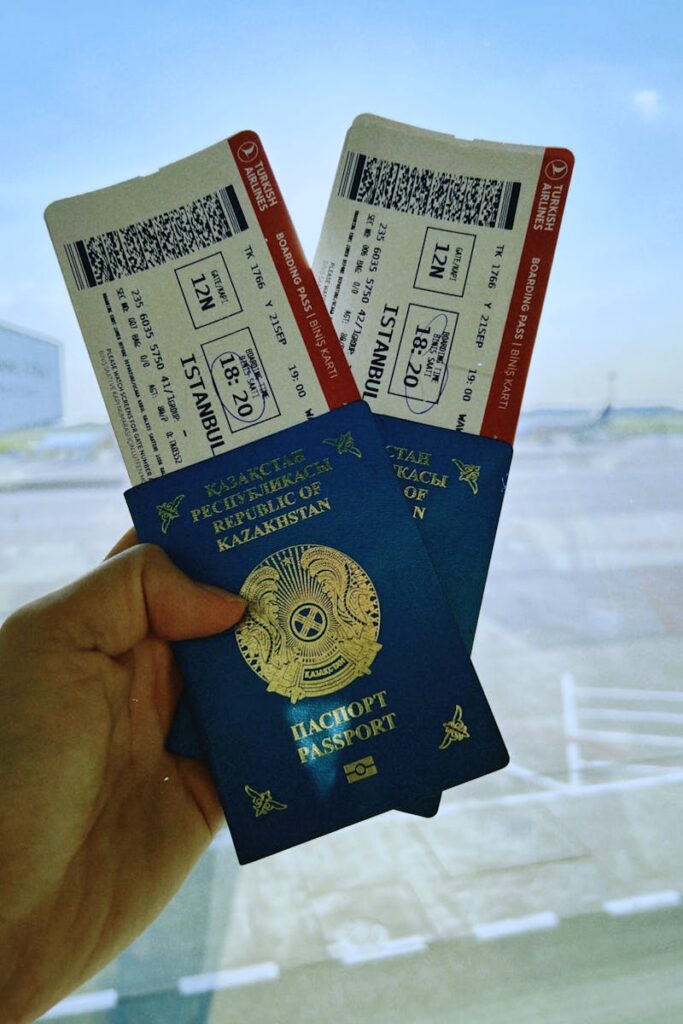When planning international travel, you’ll likely come across two important terms that often confuse even seasoned travelers: onward ticket and return ticket. Both play a crucial role in meeting immigration requirements and airline boarding policies, but they aren’t the same thing. Understanding the difference can help you avoid unnecessary expenses, last-minute stress at the airport, or even being denied entry into a country.
In this guide, we’ll break down the difference between an onward ticket and a return ticket, explain why immigration authorities care about them, and show you how to choose the right option for your travel style.

What Is a Return Ticket?
A return ticket is a round-trip booking with fixed departure and arrival dates. For example, if you book a flight from New York to Paris and back to New York, that’s a return ticket.
Key characteristics of a return ticket:
- Has both an outbound and inbound flight.
- Usually purchased as a single booking with an airline.
- Commonly used for tourist holidays, business trips, or short visits.
- Offers peace of mind for travelers with fixed schedules.
Who typically buys return tickets?
- Vacationers with set travel dates.
- Business travelers who must attend specific meetings or events.
- Families or groups booking travel packages.
Return tickets are straightforward: they not only show how you’re getting to your destination but also guarantee how you’re leaving.
What Is an Onward Ticket?
An onward ticket is proof that you plan to leave the country you’re entering without necessarily returning to your original departure point. Unlike a return ticket, an onward ticket doesn’t have to bring you back home.
For example, if you’re flying to Bangkok on a one-way ticket, you could present an onward ticket from Thailand to Vietnam as proof you’ll exit the country.
Key characteristics of an onward ticket:
- Shows departure from the destination country to another location.
- Doesn’t need to be a return to your home country.
- Can be a flight, bus, or train ticket depending on immigration requirements.
- Often required for visa applications, visa on arrival, or boarding flights.
Who typically needs onward tickets?
- Digital nomads traveling indefinitely.
- Backpackers in Southeast Asia or South America hopping between countries.
- One-way travelers who don’t want to commit to a return date.
Because onward tickets are flexible, they’re the go-to solution for travelers who want freedom while still complying with immigration rules.
Why Immigration Authorities Care
Countries enforce onward or return ticket rules to prevent visa overstays. Immigration authorities from the United States (CBP) and European Schengen Zone officials to governments in Thailand, Indonesia, and Mexico use this as proof that visitors won’t remain illegally.
Airlines also enforce these rules because they’re legally responsible for transporting passengers who are denied entry. If you arrive without proof of onward travel, the airline may be forced to fly you back at their own expense. To avoid this, many airlines demand an onward or return ticket before issuing a boarding pass.
Onward Ticket vs Return Ticket: Key Differences
| Feature | Onward Ticket | Return Ticket |
|---|---|---|
| Definition | Proof you’ll leave the country, not necessarily back to your origin | Round-trip booking from origin to destination and back |
| Flexibility | High lets you choose your next destination later | Low fixed departure and return dates |
| Cost | Can be much cheaper (via temporary reservations) | Generally more expensive |
| Best for | One-way travelers, digital nomads, backpackers | Tourists, business trips, fixed itineraries |
| Immigration Acceptance | Widely accepted if verifiable | Always accepted |
How to Get a Valid Onward Ticket Without Overspending
The biggest issue with onward tickets is that many travelers don’t want to commit to (or pay for) flights they may never use. Booking fully refundable flights can be costly and complicated, while booking cheap throwaway tickets can be risky.
That’s where services like Onward Flight Proof come in. They provide legitimate, verifiable onward flight bookings that include a PNR (Passenger Name Record) you can confirm directly on the airline’s website.
Benefits of using a professional onward ticket service:
- 100% Immigration-Ready – Accepted by airlines and border authorities worldwide.
- Budget-Friendly – Far cheaper than buying refundable tickets.
- Flexible Travel Planning – Keeps your itinerary open for spontaneous decisions.
- Time-Saving – Instant bookings without the stress of last-minute scrambling.
For long-term travelers and digital nomads, this is the most practical solution to meet onward ticket requirements without burning through your budget.

When to Choose Return Tickets vs Onward Tickets
- Choose a Return Ticket if:
- You’re traveling for a short holiday with fixed dates.
- You prefer a hassle-free option that covers both entry and exit.
- You’re booking package tours or business trips.
- Choose an Onward Ticket if:
- You’re traveling one-way and want flexibility.
- You’re moving between multiple countries without a set plan.
- You’re applying for a visa on arrival or visiting countries known for strict onward travel enforcement (like Thailand, Indonesia, or the Philippines).
Final Thoughts
Both onward tickets and return tickets serve the same purpose: showing immigration authorities that you won’t overstay your welcome. The difference lies in flexibility and cost.
For structured trips with fixed dates, a return ticket makes sense. But for digital nomads, backpackers, or long-term travelers who thrive on flexibility, an onward ticket is the smarter choice.
Instead of risking airport stress or wasting money on unused tickets, you can secure a verifiable onward flight booking through Onward Flight Proof. It’s the easiest way to travel with confidence, meet immigration requirements, and still keep your freedom to explore.